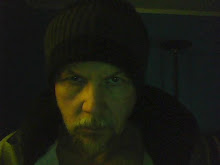
In the 600-plus pages of my two-volume edition of the Notebooks of Simone Weil [Routledge & Kegan Paul, London, 1956; translated by Arthur Wills], she cites the Bhagavad Gîtâ a total of 41 times. For this reason, I was reading one translation of the Gîtâ, which I took out of the library, while working my way through the Notebooks. When I had finished that, I bought a copy of a more recent translation, by Graham M. Schweig, which I have on my nightstand. I am currently working my way through that, a couple of pages per night. Last night I began the fourteenth of the eighteen chapters, in which the Lord Krishna explains to Arjuna the three gunas, or “qualities of nature”: sattva, rajas, and tamas. Simone Weil uses these concepts in constructing and elucidating her system of theology, relating them to both Platonism and Christianity.
The gunas are each briefly defined in the Index to Sanskrit Terms provided at the end of the Notebooks:
Sattva: higher element of the gunas; principle of purity and light.
Rajas: middle element of the gunas; disturbing principle which gives rise to the passions.
Tamas: lower element of the gunas; principle of darkness and evil.
Collectively, these three “qualities” or substances go to form the prakrti, which is defined in the index as “original matter (or nature).” Another key term, which is strangely omitted from the index in the Notebooks, is dharma. In a footnote on page 21 of his translation of the Gîtâ, Schweig defines dharma as: “A state of consciousness, a personal calling to goodness, cosmic harmony, sound ethical law, or justice. Dharma is the very first word in the Sanskrit Gîtâ, and this symbolic primacy is not lost on Simone Weil. Each person’s dharma, she knows is “all mixed up with evil,” the amount of which is dependant upon the relative strength of influence exerted upon the individual’s actions by each of the three qualities of nature. Actions, and the results of actions, are karma, which can be likened to a debt that the individual owes to existence as defined by how far he falls short of fulfilling his individual dharma. The thematic aim of the Gîtâ, Weil says, is the “ordering of finite means with a view to an infinite and transcendent end: how is this possible.” Her answer to this question is: “One should become detached from the three gunas (even sattva). Action for action’s sake, not for its fruits (even the fruit of inner perfection)” – (page 89).
We will look at this paradox further as time goes on, since it seems to be a crucial element of Simone Weil’s thought in contemplating the nature and goals of human existence.
NOTE ON THE ILLUSTRATION: It may seem inappropriate to use "The Three Graces" to decorate a post on "The Three Gunas." But my reasons are two-fold: a) I'm a fan of the artist, and this is a prime excuse; and b) it is precisely because all three gunas (even tamas) look good to us when we are failing in our attention to duty and allowing them to influence our acts, that all of our acts are entangled, or mixed up with evil. Caveat emptor.














